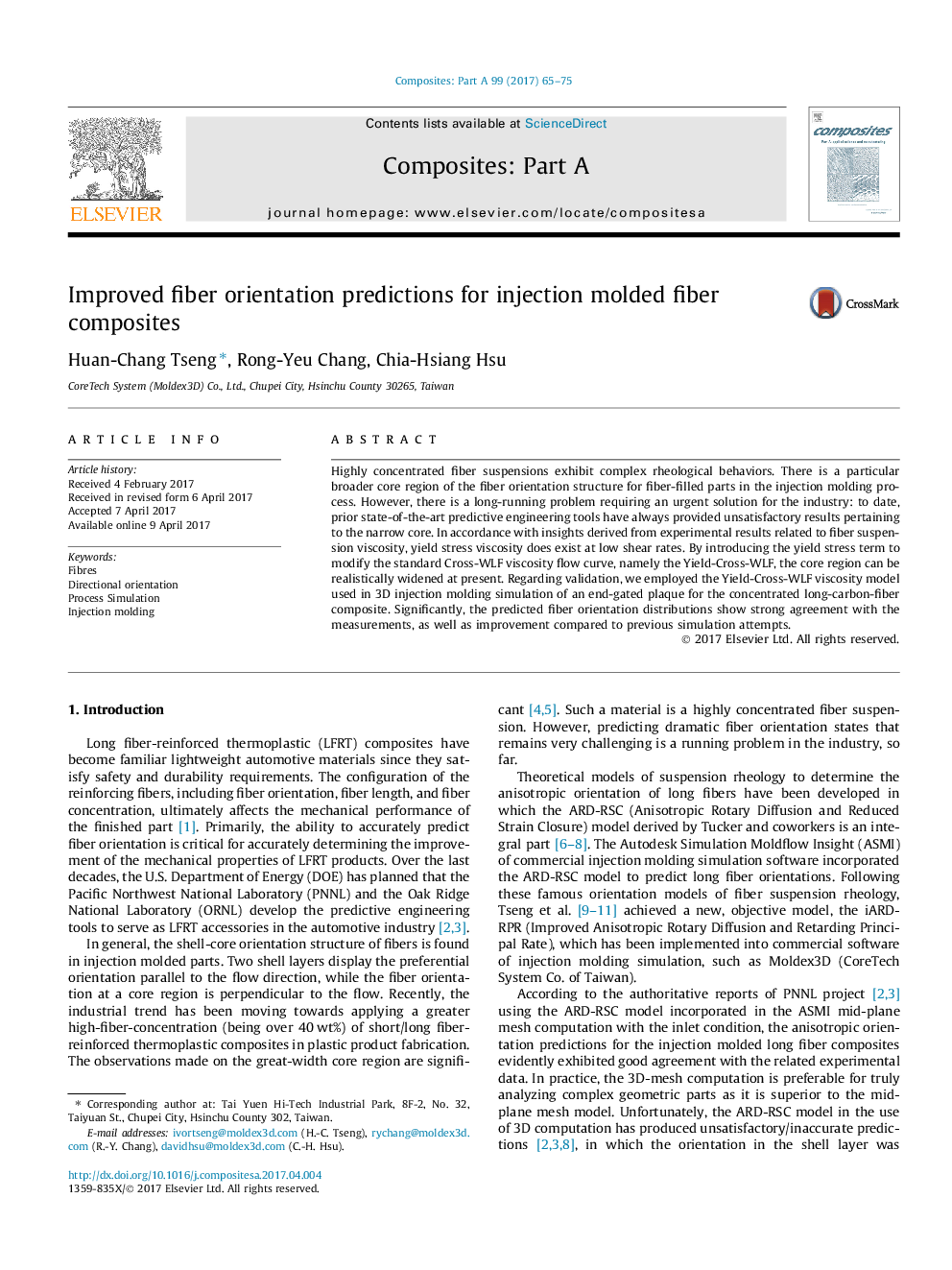| Article ID | Journal | Published Year | Pages | File Type |
|---|---|---|---|---|
| 5439560 | Composites Part A: Applied Science and Manufacturing | 2017 | 11 Pages |
Abstract
Highly concentrated fiber suspensions exhibit complex rheological behaviors. There is a particular broader core region of the fiber orientation structure for fiber-filled parts in the injection molding process. However, there is a long-running problem requiring an urgent solution for the industry: to date, prior state-of-the-art predictive engineering tools have always provided unsatisfactory results pertaining to the narrow core. In accordance with insights derived from experimental results related to fiber suspension viscosity, yield stress viscosity does exist at low shear rates. By introducing the yield stress term to modify the standard Cross-WLF viscosity flow curve, namely the Yield-Cross-WLF, the core region can be realistically widened at present. Regarding validation, we employed the Yield-Cross-WLF viscosity model used in 3D injection molding simulation of an end-gated plaque for the concentrated long-carbon-fiber composite. Significantly, the predicted fiber orientation distributions show strong agreement with the measurements, as well as improvement compared to previous simulation attempts.
Related Topics
Physical Sciences and Engineering
Materials Science
Ceramics and Composites
Authors
Huan-Chang Tseng, Rong-Yeu Chang, Chia-Hsiang Hsu,
